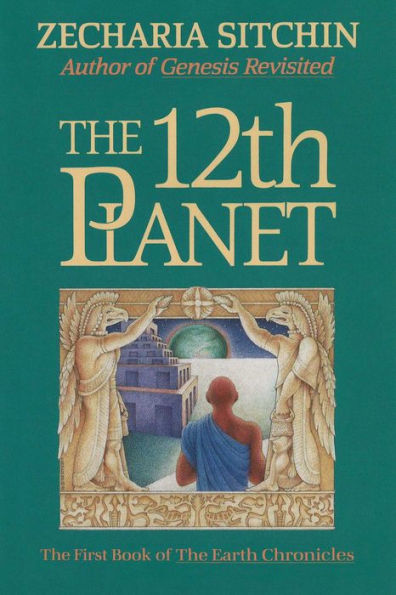Read an Excerpt
Chapter One
ENDLESS BEGINNING
Of the evidence that we have amassed to support our conclusions, exhibit number one is Man himself. In many ways, modem man -- Homo sapiens -- is a stranger to Earth.
Ever since Charles Darwin shocked the scholars and theologians of his time with the evidence of evolution, life on Earth has been traced through Man and the primates, mammals, and vertebrates, and backward through everlower life forms to the point, billions of years ago, at which life is presumed to have begun.
But having reached these beginnings and having begun to contemplate the probabilities of life elsewhere in our solar system and beyond, the scholars have become oneasy about life on Earth: Somehow, it does not belong here. If it began through a series of spontaneous chemical reactions, why does life on Earth have but a single source, and not a multitude of chance sources? And why does all living matter on Earth contain too little of the chemical elements that abound on Earth, and too much of those that are rare on our planet?
Was life, then, imported to Earth from elsewhere?
Man's position in the evolutionary chain has compounded the puzzle. Finding a broken skull here, a jaw there, scholars at first believed that Man originated in Asia some 500,000 years ago. But as older fossils were found, it became evident that the mills of evolution grind much, much slower. Man's ancestor apes are now placed at a staggering 25,000,000 years ago. Discoveries in East Africa reveal a transition to manlike apes (horninids) some 14,000,000 years ago. It was about 11,000,000 years later that the first ape-man worthy of theclassification Homo appeared there.
The first being considered to be truly manlike --"Advanced Australopithecus" -- existed in the same parts of Africa some 2,000,000 years ago. It took yet another million years to produce Hom erectus. Finally, after another 900,000 years, the first primitive Man appeared; be is named Neanderthal after the site where his remains were first found.
In spite of the passage of more than 2,000,000 years between Advanced Australopithecus and Neanderthal, the tools of these two groups-sharp stones-were virtually alike; and the groups themselves (as they are believed to have looked) were hardly distinguishable. (Fig. 1)
Then, suddenly and inexplicably, some 35,000 years ago, a new race of Men -- Homo sapiens ("thinking Man")appeared as if from nowhere, and swept Neanderthal Man from the face of Earth. These modern Men -- named Cro-Magnon -- looked so much like us that, if dressed like us in modern clothes, they would be lost in the crowds of any European or American city. Because of the magnificent cave art which they created, they were at first called "cavemen." In fact, they roamed Earth freely, for they knew how to build shelters and homes of stones and animal skins wherever they went.
For millions of years, Man's tools had been simply stones of useful shapes. Cro-Magnon Man, however, made specialized tools and weapons of wood and bones. He was no longer a "naked ape," for he used skins for clothing. His society was organized; he lived in clans with a patriarchal hegemony. His cave drawings bespeak artistry and depth of feeling; his drawings and sculptures evidence some form of "religion," apparent in the worship of a Mother Goddess, who was sometimes depicted with the sign of the Moon's crescent. He buried his dead, and must therefore have had some philosophies regarding life, death, and perhaps even an afterlife.
As mysterious and unexplained as the appearance of Cro-Magnon Man has been, the puzzle is still more complicated. For, as other remains of modem Man were discovered (at sites including Swanscombe, Steinheim, and Montmaria), it became apparent that Cro-Magnon Man stemmed from an even earlier Hom sapiens who lived in western Asia and North Africa some 250,000 years before Cro-Magnon Man.
The appearance of modem Man a mere 700,000 years after Homo erectus and some 200,000 years before Neanderthal Man is absolutely implausible. It is also clear that Homo sapiens represents such an extreme departure from the slow evolutionary process that many of our features, such as the ability to speak, are totally unrelated to the earlier primates.
An outstanding authority on the subject, Professor Theodosius Dobzbansky (Mankind Evolving), was especially puzzled by the fact that this development took place during a period when Earth was going through an ice age, a most unpropitious time for evolutionary advance. Pointing out that Homo sapiens lacks completely some of the peculiarities of the previously known types, and has some that never appeared before, be concluded: "Modern man has many fossil collateral relatives but no progenitors!, the derivation of Homo sapiens, then, becomes a puzzle.
How, then, did the ancestors of modem Man appear some 300,000 years ago -- instead of 2,000,000 or 3,000,000 years in the future, following further evolutionary development? Were we imported to Earth from elsewhere, or were we, as the Old Testament and other ancient sources claim, created by the gods?
We now know where civilization began and how it developed, once it began. The unanswered question is: Why -- why did civilization come about at all? For, as most scholars now admit in frustration, by all data Man should still be without civilization. There is no obvious reason that we should be any more civilized than the primitive tribes of the Amazon jungles or the inaccessible parts of New Guinea.
But, we are told, these tribesmen still live as if in the Stone Age because they have been isolated. But isolated from what? If they have been living on the same Earth as we, why have they not acquired the same knowledge of sciences and technologies on their own as we supposedly have?
The real puzzle, however, is not the backwardness of the Bushmen, but our advancement; for it is now...



